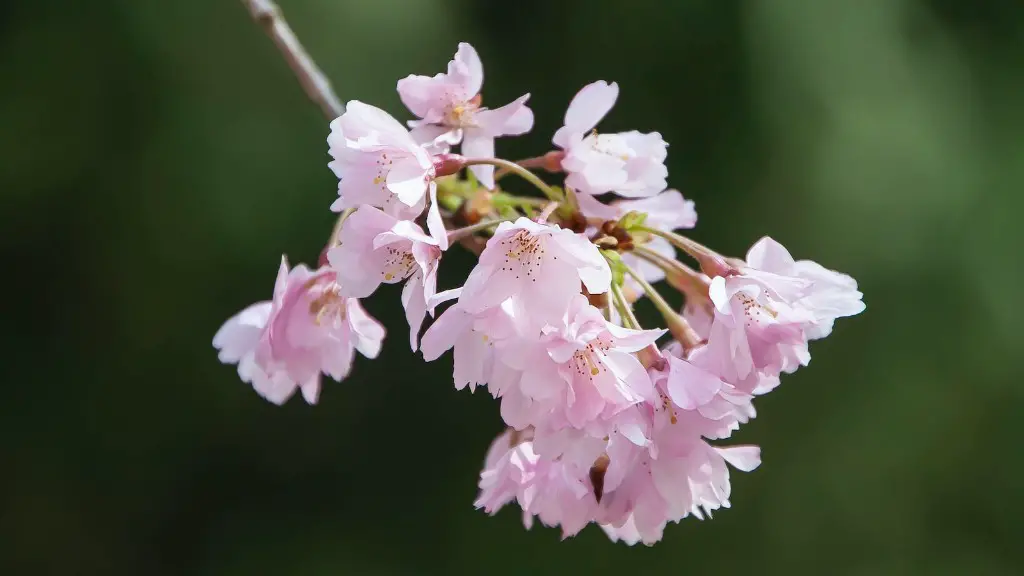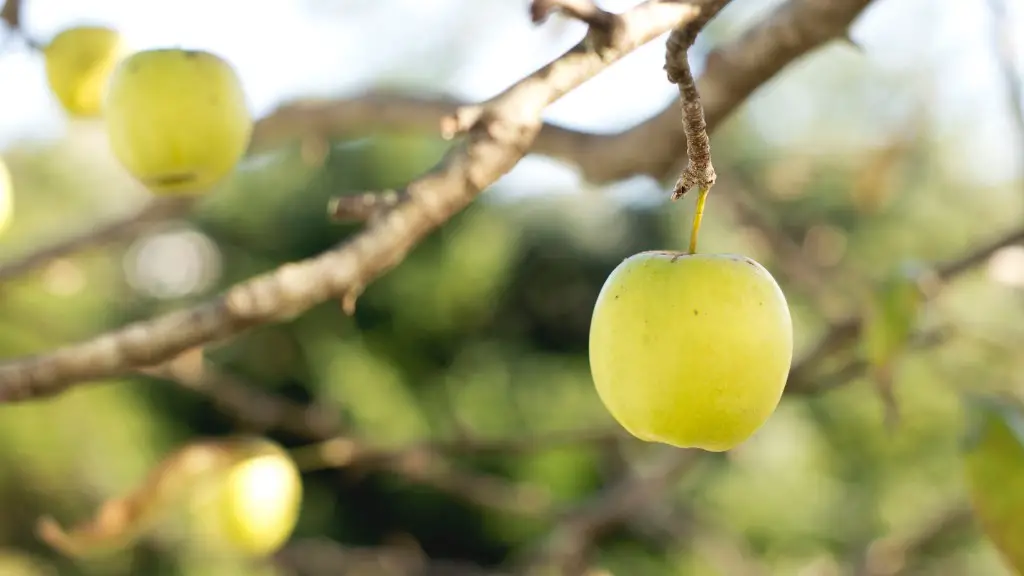What pollinates a Bing cherry tree?
Bing cherry trees need to be pollinated by other varieties of cherry trees in order for them to bear fruit. There are a few different types of pollinators that can help pollinate a Bing cherry tree, including bees, wasps, butterflies, and other insects. The most common pollinators for cherries are honeybees, bumblebees, and mason bees. They are attracted to the cherry flowers and transfer pollen from one flower to another, resulting in the fertilization of the tree and subsequent fruit production.
The process of pollination is important for cherry trees as it increases the quality of the fruit. Pollination helps in the development of larger sized cherry fruits with better colour and taste. It also increases the chances of a higher yield and better quality cherries come harvest time.
When a bee or another insect pollinates a Bing cherry tree, they land on the flower of the tree. They then move between flowers, transferring the pollen. This is what helps the tree to produce cherries at the end of the season. If the cherry tree is not properly pollinated, then it won’t be able to fulfill its potential and won’t produce a good yield of fruit.
Many varieties of bees are perfect pollinators for Bing cherry trees. The most important thing is to ensure that there is an abundance of these insects in your garden or around the cherry tree. Honeybees, carpenter bees and bumblebees are all great pollinators for Bing cherries. They are also fairly common and can be attracted to your garden by providing areas with lots of flowers and plants with different scents. You can even buy bee hives and stock your garden with honeybees that will help pollinate your Bing cherry tree.
Factors to Consider
In order for cherry trees to be successfully pollinated, there are a few factors that should be taken into account. Firstly, the cherry tree should be planted in an area where pollinators are abundant. This could be an area with nearby bee hives, or even an area filled with native flowers and other vegetation. The number of pollinators in an area will have a direct impact on the success of pollination.
Secondly, it’s important to consider the environmental conditions around the cherry tree. Pollinators will have their own preferences in terms of weather and certain times of the day when they are most active. For instance, the ideal temperature for pollination of Bing cherry trees is around 60-70 degrees Fahrenheit and the pollen-rich flowers should be exposed during the early morning hours.
The flowering process of the Bing cherry tree is also important in the process of pollination. A good amount of blooms with fully open petals are necessary for pollinators to visit the flowers and collect the pollen. To ensure successful pollination, the cherry tree should have an abundance of blooms and the flowers should remain open for an extended period of time.
Enhanced Pollination Techniques
Enhanced pollination techniques are often used for cherry trees in order to produce a higher quality harvest. These techniques involve the hand pollination of cherry flowers. One popular technique is bagging. This involves placing a paper or cloth bag on the cherry tree flower when it is in full bloom. This bag prevents pollinators such as bees from visiting the flower and collects the pollen as it is released. This collected pollen can then be used to manually pollinate other flowers on the tree.
Another popular method of enhanced pollination is through the use of vibrators. This technique involves attaching a vibrating device to the stem of the flower. The vibrations that are produced by the device then help shake the pollen off the tree. This pollen can then be used to pollinate other flowers on the tree.
While these are two of the most popular methods for enhanced pollination, there are other methods such as hand painting or hand dusting with pollen that can also be used. It is important to choose the pollination technique that is best suited to the individual tree and its particular requirements.
Understanding the Link between Pollination and Fruit Yield
Understanding the link between pollination and fruit yield is essential in order to ensure a good harvest. Due to the complex nature of pollination and its role in fruit production, there have been many studies conducted by experts in order to try and make an accurate prediction about future fruit yields.
Studies have found that pollination is one of the most important factors when it comes to determining the size and quality of the fruit yield. Researchers from the USDA Agricultural Research Service found that the number of bees in the vicinity of a cherry tree directly correlates with the size of the harvest.
The findings from these studies show that proper pollination is essential for a good harvest of cherries. Without adequate pollinators, a cherry tree will not be able to produce a good yield of fruit.
Tips for Attracting Pollinators
The best way to ensure that a Bing cherry tree is properly pollinated is to attract pollinators to the area. The key to attracting pollinators is to make sure that there is an abundance of food sources nearby. This means ensuring that there is a variety of flowers and other plants with different scents in the area.
One way to do this is to create a bee-friendly garden with a variety of colourful flowers and foliage. Planting pollinator-friendly varieties of flowers and herbs is also a great way to attract bees, butterflies, and other pollinators to the area. This will help to ensure that the Bing cherry tree is adequately pollinated and will help to ensure a good crop of cherries come harvest time.
Organic Approaches to Supporting Pollinators
Using organic pest control and integrated pest management is another way to help attract pollinators to a cherry orchard. Many orchards are now using organic approaches to supporting pollinators by providing habitat for beneficial insects and other wildlife. These beneficial insects and wildlife can help keep harmful pests away from the cherry trees and can also help with pollination.
Organic approaches also encourage biological diversity in the orchard and can help create a more sustainable and healthy environment for pollinators to thrive. This will help to ensure that the Bing cherry tree will be adequately pollinated, resulting in a good harvest of cherries.
Environmental Factors and Pollination
The environmental conditions around a Bing cherry tree can also have an impact on pollination. Ideal conditions for pollination of cherries include sunshine, warm weather, and moist soil. Too much water can have a negative effect on the flowers and can interfere with pollination. On the other hand, too little water and too much heat can also have a negative effect on the flowers and can prevent pollinators from visiting the cherry tree.
In addition to these environmental factors, it’s important to ensure that the area around the cherry tree is free from other pests and diseases. This includes the widely used pesticide imidacloprid, which is commonly used to control insect pests in cherry orchards. Imidacloprid is known to have a detrimental effect on pollinators and can reduce their ability to transfer pollen from one flower to another, resulting in inadequate pollination of the tree. Therefore, farming methods such as Integrated Pest Management should be implemented in order to minimize the use of this chemical and ensure that pollinators are not affected.
Conclusion
When it comes to pollinating a Bing cherry tree, there are a variety of pollinators that can help the process. Honeybees, bumblebees, and mason bees are all great pollinators for Bing cherry trees and can help ensure a good yield of fruit. However, there are a few factors that should be taken into account in order to ensure successful pollination, such as providing an abundance of flowers and native plants in the area. There are also a variety of enhanced pollination techniques that can be used to assist in the process, such as bagging or vibration. Finally, it’s important to consider the environmental factors and use Integrated Pest Management to minimize the use of pollutants that can have a negative effect on pollinators.


